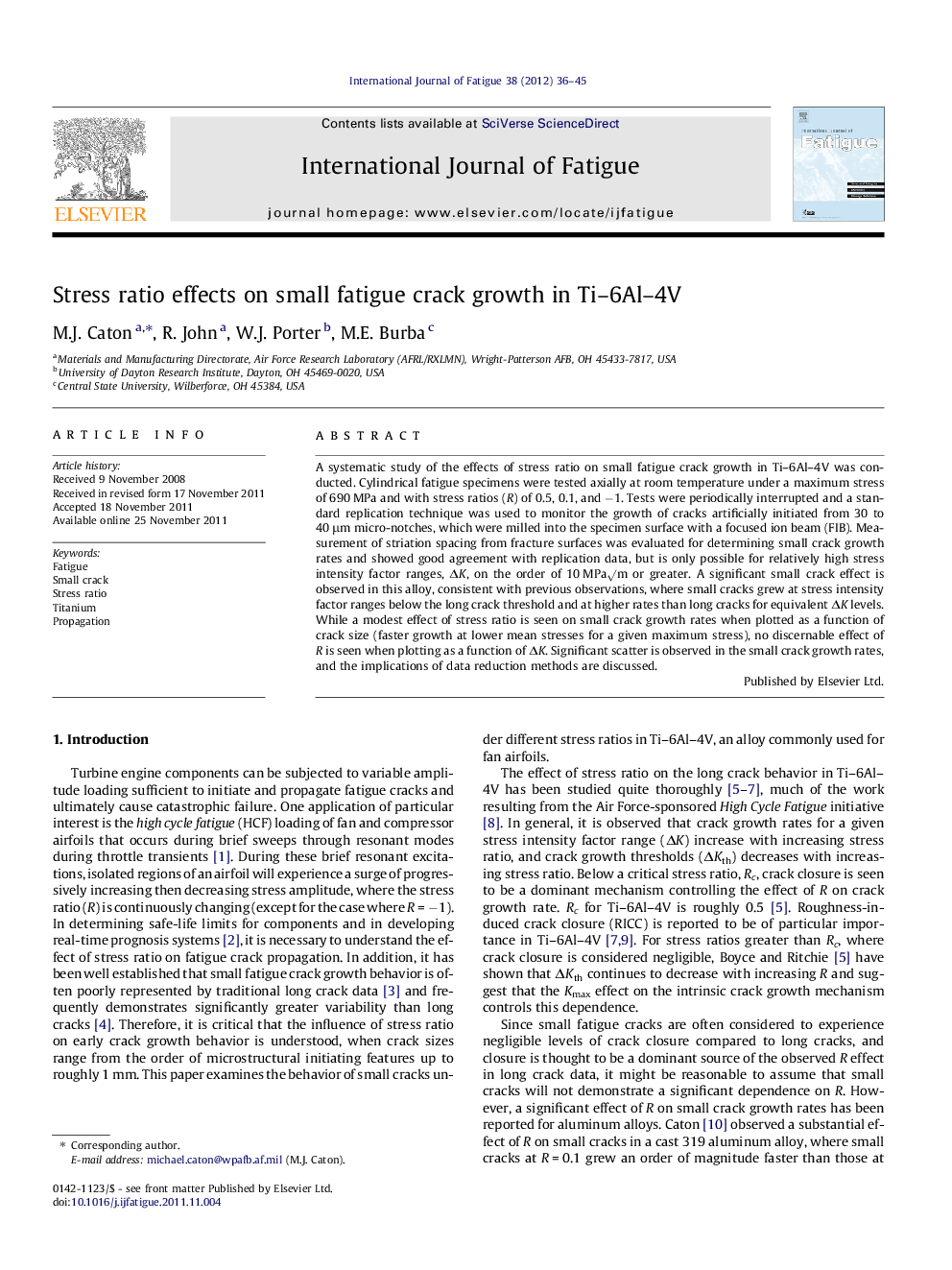| Article ID | Journal | Published Year | Pages | File Type |
|---|---|---|---|---|
| 778408 | International Journal of Fatigue | 2012 | 10 Pages |
A systematic study of the effects of stress ratio on small fatigue crack growth in Ti–6Al–4V was conducted. Cylindrical fatigue specimens were tested axially at room temperature under a maximum stress of 690 MPa and with stress ratios (R) of 0.5, 0.1, and −1. Tests were periodically interrupted and a standard replication technique was used to monitor the growth of cracks artificially initiated from 30 to 40 μm micro-notches, which were milled into the specimen surface with a focused ion beam (FIB). Measurement of striation spacing from fracture surfaces was evaluated for determining small crack growth rates and showed good agreement with replication data, but is only possible for relatively high stress intensity factor ranges, ΔK, on the order of 10 MPa√m or greater. A significant small crack effect is observed in this alloy, consistent with previous observations, where small cracks grew at stress intensity factor ranges below the long crack threshold and at higher rates than long cracks for equivalent ΔK levels. While a modest effect of stress ratio is seen on small crack growth rates when plotted as a function of crack size (faster growth at lower mean stresses for a given maximum stress), no discernable effect of R is seen when plotting as a function of ΔK. Significant scatter is observed in the small crack growth rates, and the implications of data reduction methods are discussed.
► We examined stress ratio effects on small fatigue crack growth in Ti–6Al–4V. ► A distinct small crack effect is evident in the data. ► There is no discernable stress ratio effect for small cracks at ΔK < 10 MPa√m. ► Minimal R effect could be due to diminished crack closure in small crack regime.
